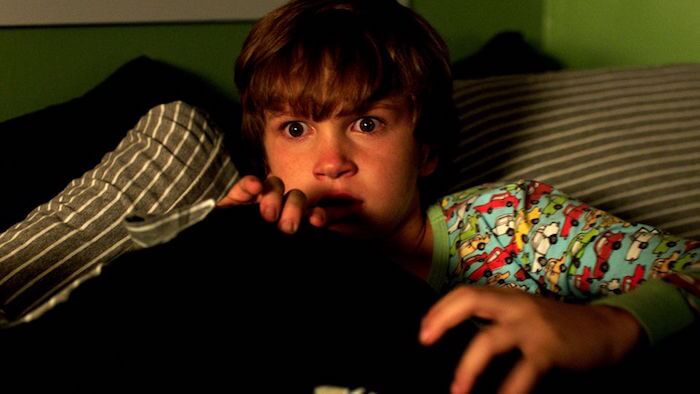Are You Afraid of the Dark? Lights Out


Directed by David Sandberg
Opens July 22
Horror maestro (and Furious 7 driver) James Wan may be industrious, having directed two Conjurings and two Insidiouses over the past five years. But he must know, having worked with producer Jason Blum, that he’s gotta amp it up if he wants to compete with Blum’s prodigious output of low-budget horror product. Here, then, trailing Conjuring 2 by just six weeks or so, is the Wan-produced Lights Out, about a ghostly presence that thrives in the dark and threatens various members of an unlucky family.
It will surprise few to learn that this ghostly presence has stringy hair and stutter-y movements, and a backstory that involves a mental hospital. But rather than (fully) demonizing the mentally ill, David Sandberg’s movie (adapted from his short of the same name) makes some attempt to explore the subject within metaphorical genre lines. Clinical depression and this scraggly ghost haunt Sophie (Maria Bello) in tandem, and at least one is coming for her young son Martin (Gabriel Bateman, a pleasingly low-key child actor), after his dad (Billy Burke) leaves the picture during a creepy cold open. Martin turns to his half-sister (and Avenged Sevenfold fan!) Rebecca (Teresa Palmer), who experienced similar terrors as a child, resulting in her estrangement from Sophie. Rebecca becomes the focal point of the story; she struggles to forgive her mother, and her mother struggles to keep it together. Diana, the ghostie in the middle of all this family drama, disappears when light shines on her, leading to sequences driven by the matter-of-fact click-clack of a lightswitch, or the buzz of a blinking neon sign conveniently glowing outside Rebecca’s window.
Diana’s closeness with Sophie generates some shivers even in the safety of light. Wan’s own films succeed more by pure technique; the story hook of The Conjuring is your basic haunted house/exorcism combo, goosed with impeccably choreographed camera movements and strong performances. Lights Out consistently tweaks horror-movie clichés in small but effective ways: It’s the parent, rather than the child, with the spooky and initially presumed-imaginery friend; the evil force does not confine itself to a particular location, nor to the nighttime (all it needs is the shadows, wherever they fall); and the poor, expendable boyfriend is actually a lovable doof, not mere ghost-murder fodder (other characters fill that role, but not as frequently or gratutiously as in other genre exercises).
Sandberg’s filmmaking, while assured, never catches up to the slow-burn best of his producer Wan. The camera doesn’t accumulate the same levels of dread as it travels; some of the jump scares are cheaper, if effective. And as written by Eric Heisserer, a horror churner specializing in mediocre remakes (of The Thing and Nightmare on Elm Street) and middling sequels (to Final Destination), the dialogue contributes its share of graceless chain-rattling. But the movie does build—briskly, as it’s less than 90 minutes long—to an extended haunted-house freakout with flashes of blacklight, reddish firelight, and all-important cell-phone light. It’s satisfying (the audience I saw it with cheered, several times) and reasonably involving on an emotional level, even if it can’t quite find a smart or surprising way out of its depression metaphor. This B-movie’s eventual fate is telegraphed by the ghost story it tells: the lights go up and it disappears.
You might also like 




















